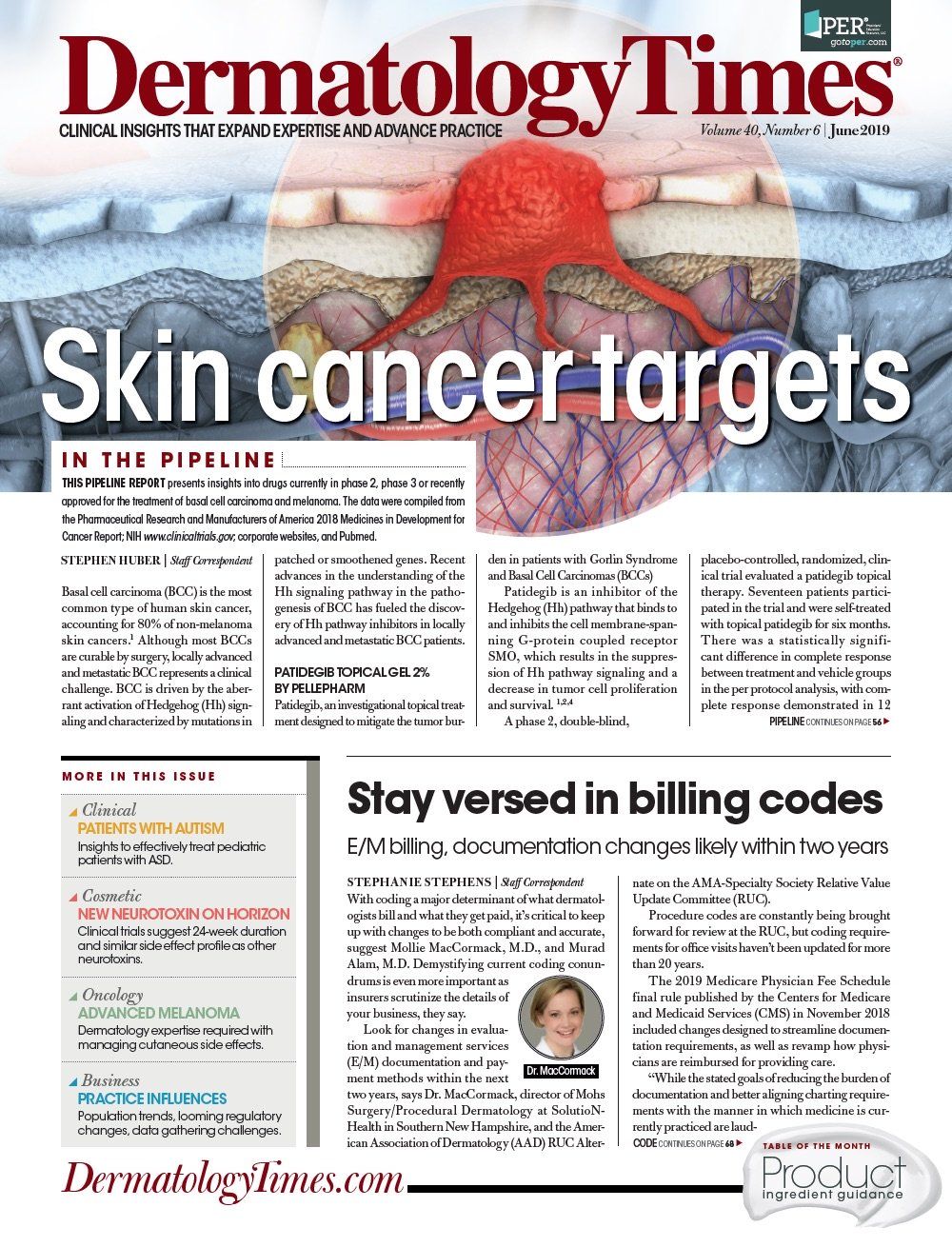- Case-Based Roundtable
- General Dermatology
- Eczema
- Chronic Hand Eczema
- Alopecia
- Aesthetics
- Vitiligo
- COVID-19
- Actinic Keratosis
- Precision Medicine and Biologics
- Rare Disease
- Wound Care
- Rosacea
- Psoriasis
- Psoriatic Arthritis
- Atopic Dermatitis
- Melasma
- NP and PA
- Skin Cancer
- Hidradenitis Suppurativa
- Drug Watch
- Pigmentary Disorders
- Acne
- Pediatric Dermatology
- Practice Management
- Prurigo Nodularis
- Buy-and-Bill
Publication
Article
Dermatology Times
3 Trends in skincare
Author(s):
What do you say when patients ask about the microbiome, blue light and ‘green’ products? One expert helps separate merit from marketing hype.
Dr. Baumann

It’s hard not to notice three terms that marketers are hyping as trends in skincare: microbiome, blue light and (organic) green.
But what do they really mean? And what should dermatologists be telling their patients? Two experts offer insights and recommendations.
Microbiome: Help or Harm?
“There is a lot of discussion about the microbiome because new studies are showing a relationship between the bacteria in the gut and on the skin and skin health,” according to Miami, Fla.,-based dermatologist Leslie Baumann, M.D., author of the textbook Cosmeceuticals and Cosmetic Ingredients.
The association has led to a plethora of “probiotic” skincare brands - many containing one to three types of bacteria that claim to benefit the skin, according to Dr. Baumann.
Dr. Baumann doesn’t recommend topical probiotics. Here’s why: “We don’t know yet what bacteria are good and bad for the skin. We have some hints but nothing conclusive,” Dr. Baumann says. “The gut flora may play a bigger role than previously thought, so topical products would not affect gut flora. Most studies are showing that diversity of flora is more important than one ‘good’ bacterium so adding exogenous probiotics might actually do harm. And the response to these topical probiotics will depend on skin type, medications, diet, environment, in addition to genetics.
“We just do not know enough about the role all of these factors play with the microbiome,” she says.
Blue Light: Good for Acne, Bad for Aging
Dr. Baumann says she loved using blue light as an acne treatment to kill cutibacterium acnes (formerly Propionibacterium acnes) but new studies suggest it ages the skin.
Indeed, researchers have found, for example, that low-level 449 nm blue light photobiomodulation kills p. acnes, according to a study published March 28, 2019, in Lasers in Surgery and Medicine.1
But there is a dark side to using blue light. Blue light contributes to skin aging similar to UVA, according to authors of a paper published July 2017 in Free Radical Biology and Medicine.2
“I have patients coming in a lot now with a blue light guard on their cell phone to prevent aging. I now avoid using blue light on patients. I still use red light and have not found data that red light ages skin,” Dr. Baumann says.
The Meaning of ‘Green’
There is no accepted definition of organic for skincare. Many base the definition on the food classification. And long-term studies on the effects of using topical organic products or ingredients are lacking, according to Dr. Baumann.
“As pressure grows on cosmetics companies to use more environmentally friendly ingredients and packaging, we are seeing a profound increase of organic/natural and eco claims on ‘green’ beauty products. Terms such as active naturals, botanical, natural, green and organic are used; however, these terms are meaningless without standard agreed upon definitions,” Dr. Baumann writes in Cosmetics and Cosmeceuticals. “Of these terms, only the term ‘organic’ has requirements for its use. Unfortunately, there are different standards in the United States and in different countries about what ‘organic’ and ‘natural’ means.”
But so-called “green” skincare is actually more than a marketing push - it’s a real need - and in demand among consumers, according to Fred Zülli, Ph.D., managing director of Mibelle Biochemistry Switzerland, a unit of the Mibelle Group, which develops and produces active ingredients for the personal care industry.
The trend in green skincare implies a fast-growing demand for more natural, organic and sustainable products, according Dr. Zülli. The challenge, he says, is that there are so many different concepts for green skincare that it is difficult to formulate the right consumer products.
“In this context, consumers are looking for plant-derived actives, as they believe that these are safer and have less side effects. Also, they are looking for more natural components in the products and less or no preservatives, colors or mineral oils,” Dr. Zülli writes in an email to Dermatology Times.
Consumers, as a result, want greater transparency of ingredients and claims.
Today’s consumer also is concerned about sustainability, according to Dr. Zülli.
“As naturally grown not always meets sustainability, biotechnology is of great interest to develop and produce natural components in a sustainable way,” he says.
For example, Dr. Zülli and colleagues have developed a process to grow moss plants in photo-bioreactors so the ingredient can be used in cosmetics.
“Moss plants have not been used in cosmetics, as the plant grows very slowly, cannot be cultivated and if collected in the wild are heavily contaminated with pollutants such as heavy metals,” he says.
So, the scientists grow the moss plant as protonema tissue in a water-based media with light. The biotechnological production leads to sustainable and pure moss tissue. From the moss biomass an extract is then produced to be used as a cosmetic ingredient.
“In vitro, the product has shown an activation of cell nuclear pore genes which are down regulated in aged fibroblasts. Cell nucleus health is a new anti-aging topic, as the transport of molecules in and out of the nucleus is extremely important for the response of cells to external stress factors. In U.S. in-vivo studies, we could show that the moss extract could vitalize the skin to reduce the negative effects of health/cold and dry/moist stress conditions,” he writes.
References:
- Boyd JM, Lewis KA, Mohammed N, et al. Propionibacterium acnes susceptibility to low-level 449 nm blue light photobiomodulation. Lasers Surg Med. 2019; epub ahead of print.
- Nakashima Y, Ohta S, Wolf AM. Blue light-induced oxidative stress in live skin. Free Radic Biol Med. 2017;108:300-310.






